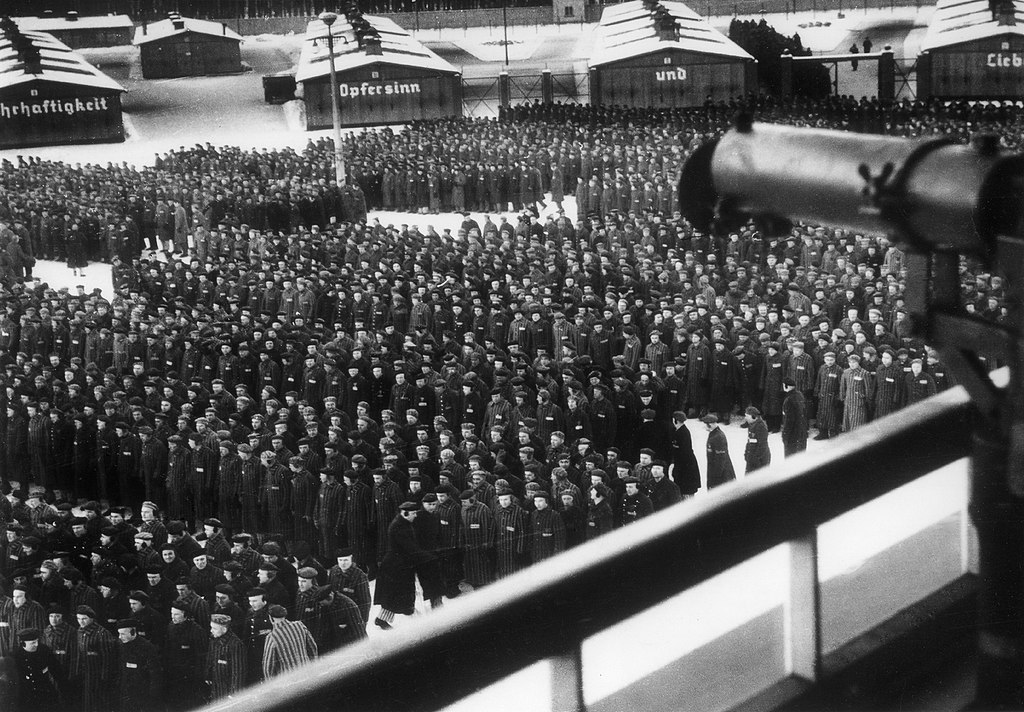
“Each item helped the fugitives survive on the run inside Nazi Occupied Europe.”
By Dr. Mark Felton
AT OFLAG VI B Warburg POW camp in Germany on Aug. 30, 1942, 40 British, Australian and New Zealand officers launched a daring mass escape over the camp’s huge perimeter fences using specially built scaling contraptions.
Each apparatus consisted of a ladder made from bunk slats. When leaned against the camp’s inner fence, a ‘bridge’ made of homemade rope extended into position to cover the five-foot wide barbed-wire buffering separating the inmates from freedom.
But for their escape to succeed, the prisoners’ own in-camp Quartermasters Department, simply known as ‘Q’ (a term later adopted in the James Bond movies), drew on all of its members’ ingenuity and talent to create five pieces of vital escape kit for the breakout. Each item helped the fugitives survive on the run inside Nazi Occupied Europe.
Below are the improvised items that helped the Allied POWs in their bid for freedom.
 A Pint-Sized Printing Press
A Pint-Sized Printing Press
While POWs in some camps printed their own newspapers, those at Oflag VI B used presses to reproduce maps on very fine tissue paper. Each copy was exact in every detail. The Q Department’s mapping section fashioned a printing plate from hardened jell-o. Once the gelatin set, printers etched map details onto it in very fine relief. Camp forgers fashioned ink made from indelible pencils and using their rudimentary press were able to run off as many copies as were required.
 Glow in the Dark Compasses
Glow in the Dark Compasses
Maps were all well and good, but without a reliable compass they would be useless. An ingenious solution was soon found to overcome this problem. Compasses were manufactured consisting of a magnetized needle set on a cork swivel. A small speck of luminous paint from a broken watch face was glued to the tip of the needle to indicate north at night. That’s when the escapers would do most of their travelling to avoid German patrols.
 Food To Go
Food To Go
When possible, escaped prisoners would live off the land. But each man who broke out of Oflag VI B also carried 15 pounds of bulk rations – enough for 18 days in the field. Much of it consisted of an improvised hard tack biscuit secretly produced by the camp’s Q section. It was made from oatmeal, milk powder, glucose, sugar and currants taken from Red Cross parcels. The ingredients were mixed with a little water and baked slowly and thoroughly. A home-made oven was placed on top of a heating stove in an accommodation hut. Since the escapers needed something that wouldn’t turn sour or go mouldy quickly, they avoided adding any fat to the mixture. This food remained fresh for weeks.
 Backpacks
Backpacks
With their army haversacks confiscated after capture, the escaping inmates of Oflag VI B needed to make their own backpacks to hold all the gear they’d need outside the wire. Each consisted of two thicknesses of thin twill blanket cloth stitched together. While a single layer was not waterproof, two layers actually managed to keep moisture out, even in a severe thunderstorm. The backpack was wide at the top and tapered to the bottom. Shoulder straps were made from the same material as the bag, with the addition of a strip of softer woollen blanket to prevent rubbing. To prevent sideslip, a string belt was attached to the bottom of the bag and could be adjusted around the waist for comfort.
 Civvy Caps
Civvy Caps
It was important for escaped POWs to blend in with the civilian population in Occupied Europe. So each prisoner modified his uniform to appear more civilian-like. ‘Q’ Department issued those breaking out with the ubiquitous 1940s workman’s flat cap to complete the effect. The caps were made from surprisingly handsome tweed blankets and manufactured in camp under the supervision of a prisoner who was a top London tailor before the war. Each hat was waterproofed by the addition of a lining made out of a piece of mackintosh taken from an army kit bag.
On the night of the escape, 32 men actually made it over the wire, the other eight fell when their climbing gear collapsed. Many of the escapers spent weeks on the run before recapture, some walking over 200 miles. Only three made it to safety by travelling through Germany, Holland, Belgium and France, with the aid of resistance fighters. After four months on the run, all were smuggled across the border into neutral Spain where they made for the British colony of Gibraltar.

Dr. Mark Felton is a British-based based historian and the author of more than a dozen books. His latest title, Zero Night: The Untold Story of World War Two’s Greatest Escape, hits shelves next week. Visit him online at markfelton.co.uk and follow him on twitter @mpfelton.









